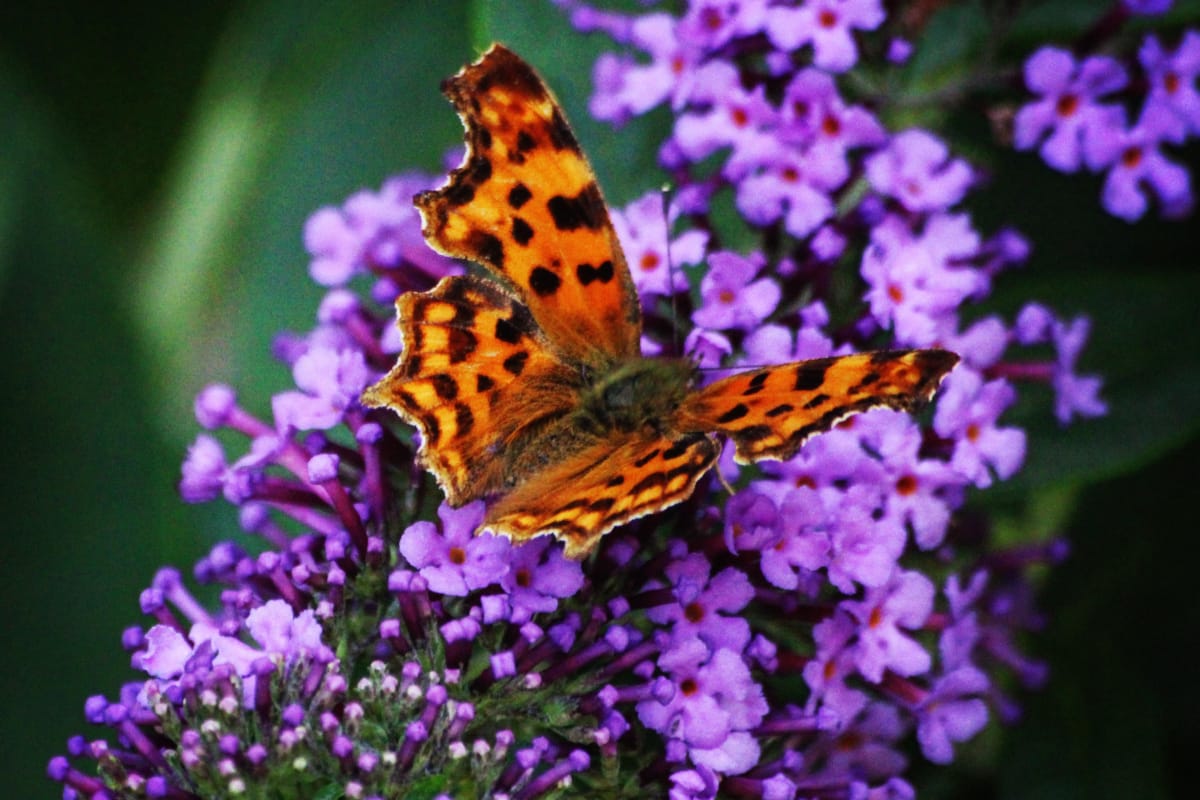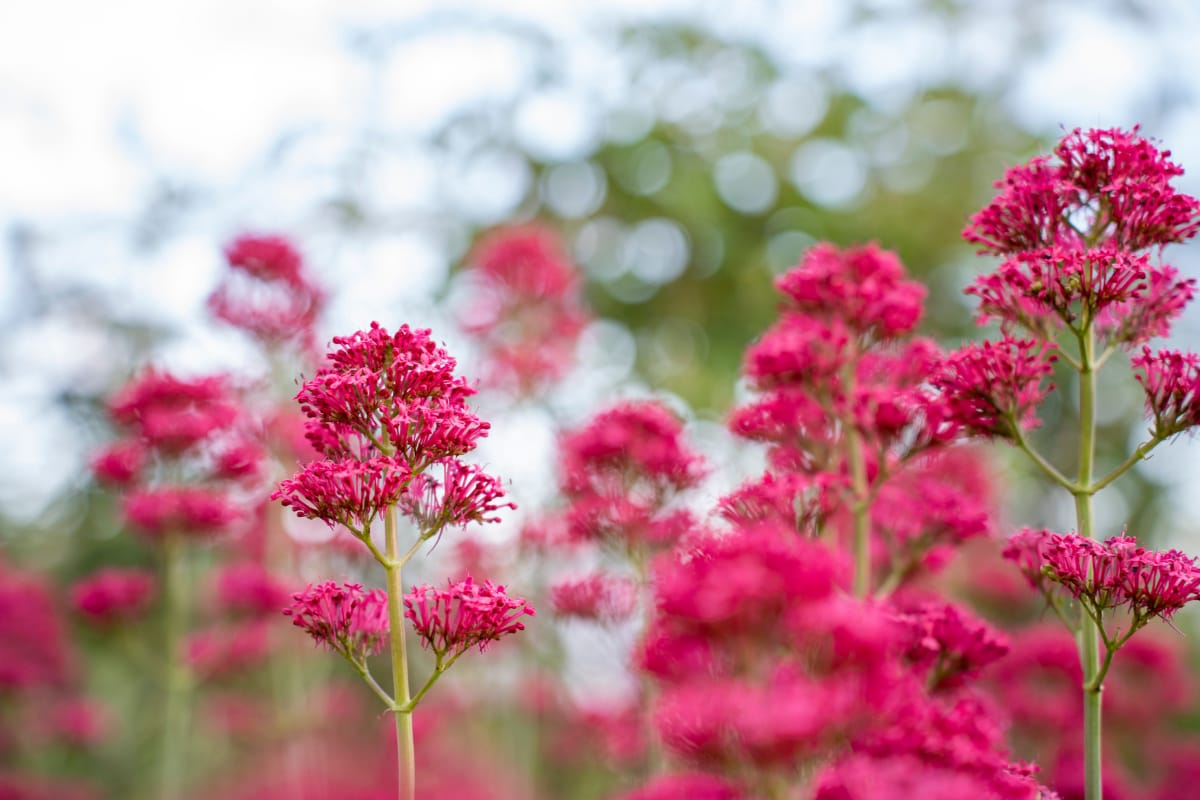Nothing in Basket!
In the UK we have around 10 species of butterfly that visit gardens if the environment offers them the food and nesting sights they need to survive. When providing an environment for butterflies you'll also be taking care of the moths, so you won't just have butterflies feasting on your flowers during the day, you could also have the hummingbird, bee hawk and mint moths visiting in the late afternoon, and other moths during the night, all feeding on the flowers you provide for them.
Adults feed on nectar, and can be seen with their long proboscis feeding from flat, daisy-like blooms as well as plants with long, tubular flowers such as buddleia. The more of these you can grow in your garden the more butterflies you can feed.
Butterfly caterpillars feed on leaves and flower buds of so-called 'caterpillar food plants'. Caterpillars of some of the most colourful butterflies feed on nettles. The brimstone feeds on common buckthorn and sea buckthorn. If you find a caterpillar in your garden leave it alone so it can grow into a butterfly.

One of the best-known nectar flowers for adult butterflies. I've taken many cuttings and spread them around the garden, the more I have the more butterflies and moths I get. I also found the more I had the more often the hawk moths would visit. Buddleia davidii produces blooms over a number of weeks between summer and autumn. You could grow a few varieties to extend the flowering season. Removing the dead flowers can prolong the flowering season.

Centranthus ruber performs best in poorer, dry or chalky soils, where it forms a tidy, compact plant and won't be overwhelmed by other, stronger plants. It often flowers early and continues well into midsummer. It does drop seeds and can spread quite easily. I've found it's best placed in a full sunny position, if it is in slight shade it will lean towards the sun.
Tall, with lots of purple flowers on stiff, wiry stems, Verbena bonariensis can be grown through other plants or in a border on its own. It flowers late in the season and is extremely rich in nectar.
This is another flower the hawk moths enjoy. It easily seeds and spreads throughout the garden without being invasive. Verbena doesn't seem to want to grow in my sandy soil, but keeps popping up in my pots or in between paving.
The pink varies of Hylotelephium spectablile produce the most nectar when it flowers in autumn. It's well worth investing in a couple of pink sedums then having the red ones which don't do so well for butterflies.

Hebe's can be short lived, but they are a reliable evergreen shrub, attracting a range of insects, in particular bees and butterflies. My hebes pretty much flowered all year and are always covered in bees and butterflies.
However, a -12c winter finished my hebes off and I haven't bothered to replace them, as I have plenty of other plants they enjoy.
As with all short lived plants, its a good idea to take cuttings so you have a 'free' plant to take its place.
Outdoors, origanum vulgare is best grown as an annual, as it isn't reliably hardy in the UK. The delicate, pink flowers are a treat for butterflies, as well as bees. Plus, the leaves make a delicious addition to dishes.
If you've created a wildflower area in your garden, then centaurea nigra is a must-have. The bright, violet flowers will attract a range of butterflies, including the common blue and meadow brown.
Tough and dependable, Eupatorium cannabinum are statuesque plants that enjoy growing in damp areas including riverbanks and wet grasslands or woodlands. The icy-pink flowers will attract red admirals and commas, among others.
Like knapweed, field scabious (knautia arvensis) is another plant that will pack meadows with colour. There are plenty of similar flowers to try too, including the small scabious and knautia, all of which are popular with butterflies.
These flowers are all over the nature reserve next to my property, I couldn't resist adding them to my garden.
When regularly deadheaded, 'Bowles's Mauve' can be relied upon to flower from spring and into autumn, providing nectar for butterflies both early and late in the year.
Although I have Bowles's Mauve, I have a preference for Walberton's Fragrant Sunshine which has beautiful yellow flowers. I've managed to take many cuttings from this plant and have spread them around the garden. When the old plant became leggy I removed it and replaced with one of my own cuttings. If anything I find more bugs on the Fragrant Sunshine.
Nothing in Basket!
